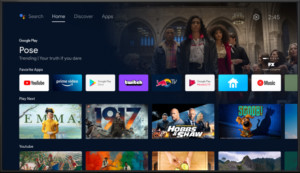Can a Television Screen Be Repaired? A Comprehensive Guide
Is your TV screen cracked, displaying lines, or simply refusing to turn on? The question on your mind is likely, “Can A Television Screen Be Repaired?” The answer, unfortunately, isn’t a simple yes or no. Several factors determine whether your TV is a candidate for repair or if a replacement is the more economical option. This guide will walk you through the different types of TV screens, common problems, repair possibilities, and the associated costs.
Decoding Different Display Technologies: LCD, LED, OLED, Plasma
Understanding your TV’s screen technology is crucial for determining repairability. Here’s a breakdown of the most common types:
-
LCD (Liquid Crystal Display): LCD screens are backlit by fluorescent lamps and are relatively inexpensive. While technically repairable, replacing the entire panel is often more cost-effective than fixing individual components. This is because the cost of labor and parts often exceeds the value of the TV.
-
LED (Light Emitting Diode): LED TVs utilize light-emitting diodes for backlighting, offering better picture quality and energy efficiency than LCDs. LED screens are often repairable due to the availability of spare parts. Manufacturers typically stock components for 5-7 years after a model’s release.
-
OLED (Organic Light Emitting Diode): OLED TVs produce stunning picture quality with self-emitting pixels, eliminating the need for backlighting. Repairing an OLED screen is possible, but the cost can be substantial. Often, if the OLED panel itself is damaged, replacement costs can rival that of a new television.
-
Plasma: Plasma TVs use tiny gas-filled cells to create the image. Unfortunately, plasma screens are generally not repairable. If your plasma screen is damaged, replacement is unlikely due to discontinued production and the scarcity of parts.
Common TV Screen Problems and Repair Options
Various issues can plague your TV screen, ranging from minor annoyances to major malfunctions:
-
Cracked Screen: A physically cracked screen typically necessitates a complete panel replacement, often making it more economical to buy a new TV.
-
Lines or Spots on the Screen: Vertical or horizontal lines, as well as dark or bright spots, can indicate problems with the screen’s internal components. These issues might be repairable, depending on the severity and the TV type.
-
Backlight Issues: Dim or uneven backlighting can be a symptom of failing LEDs in LED TVs. Replacing the backlight can be a viable repair option.
-
Burn-In: While less common with modern TVs, burn-in (a permanent image ghosting) can occur. This is usually not repairable.
Considering Warranty Coverage for Screen Repairs
Before rushing to a repair shop, check your TV’s warranty. Most manufacturers’ warranties don’t cover accidental damage like cracked screens. However, some extended warranties or insurance plans might cover such damage. Carefully review your warranty documentation or contact the retailer where you purchased the TV to understand your coverage options.
Estimating the Cost of TV Screen Repair
Repair costs fluctuate depending on several factors, including:
-
Screen Size: Larger screens generally mean higher repair costs due to the increased price of replacement panels.
-
TV Type: OLED and QLED screen repairs tend to be more expensive than LCD or LED repairs.
-
Labor Costs: Repair technician fees vary by location and experience level.
Contacting a local TV repair specialist for a diagnosis and quote is crucial before making any decisions. They can assess the damage, determine the feasibility of repair, and provide an accurate cost estimate. This allows you to weigh the cost of repair against the expense of purchasing a new television.
The Repair vs. Replace Dilemma
Ultimately, deciding between repairing or replacing your TV involves careful consideration of several factors:
-
Repair Cost vs. TV Value: If the repair cost approaches or exceeds the price of a new TV with comparable features, replacement is likely the smarter choice.
-
TV Age and Technology: Older TVs with outdated technology might not be worth repairing, especially considering the advancements in newer models.
-
Availability of Parts: If parts are scarce or discontinued, as with plasma TVs, repair becomes impractical.
By understanding the nuances of TV screen technology, common problems, and repair costs, you can make an informed decision about the fate of your beloved television. Don’t hesitate to seek professional advice to guide you through the process.








